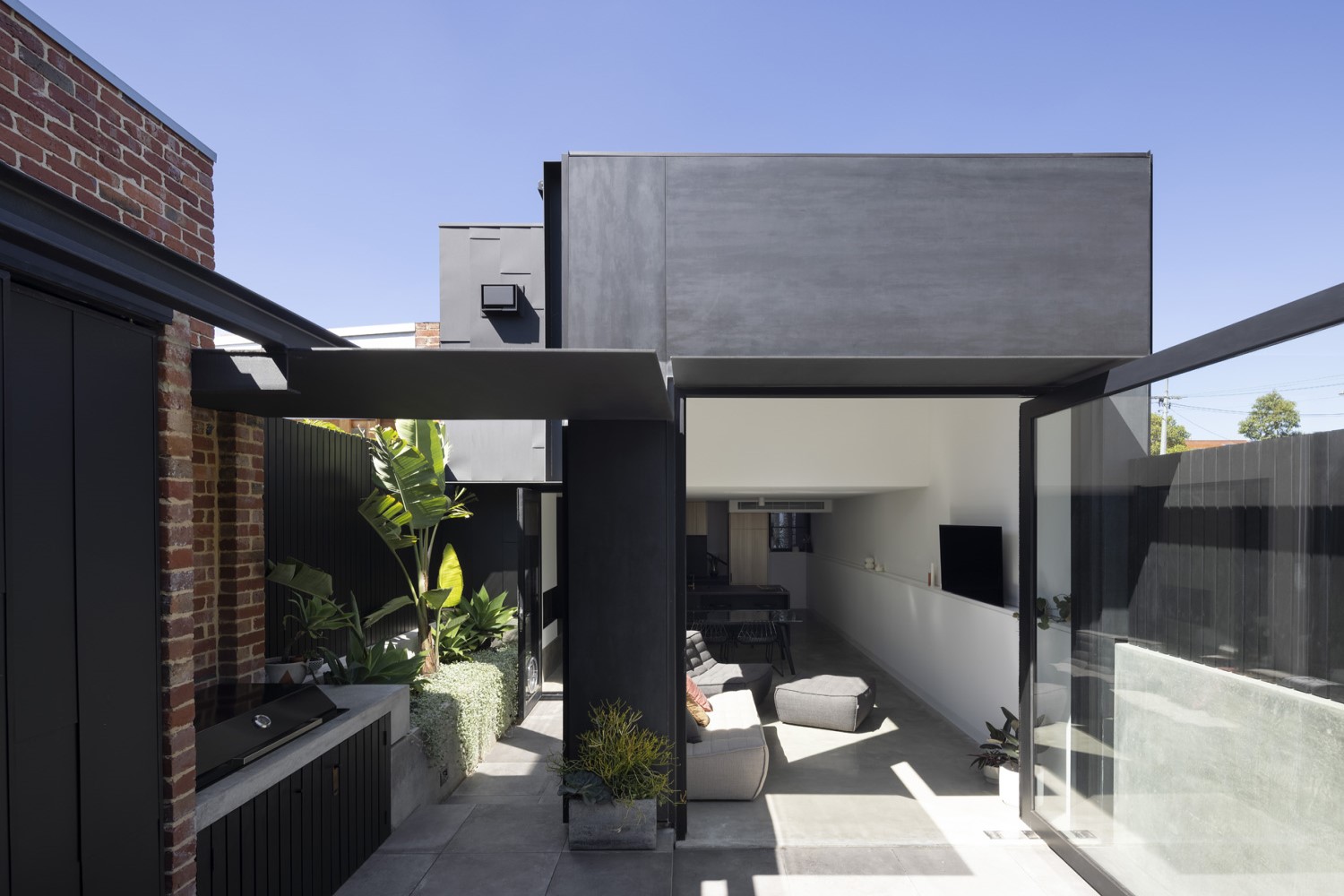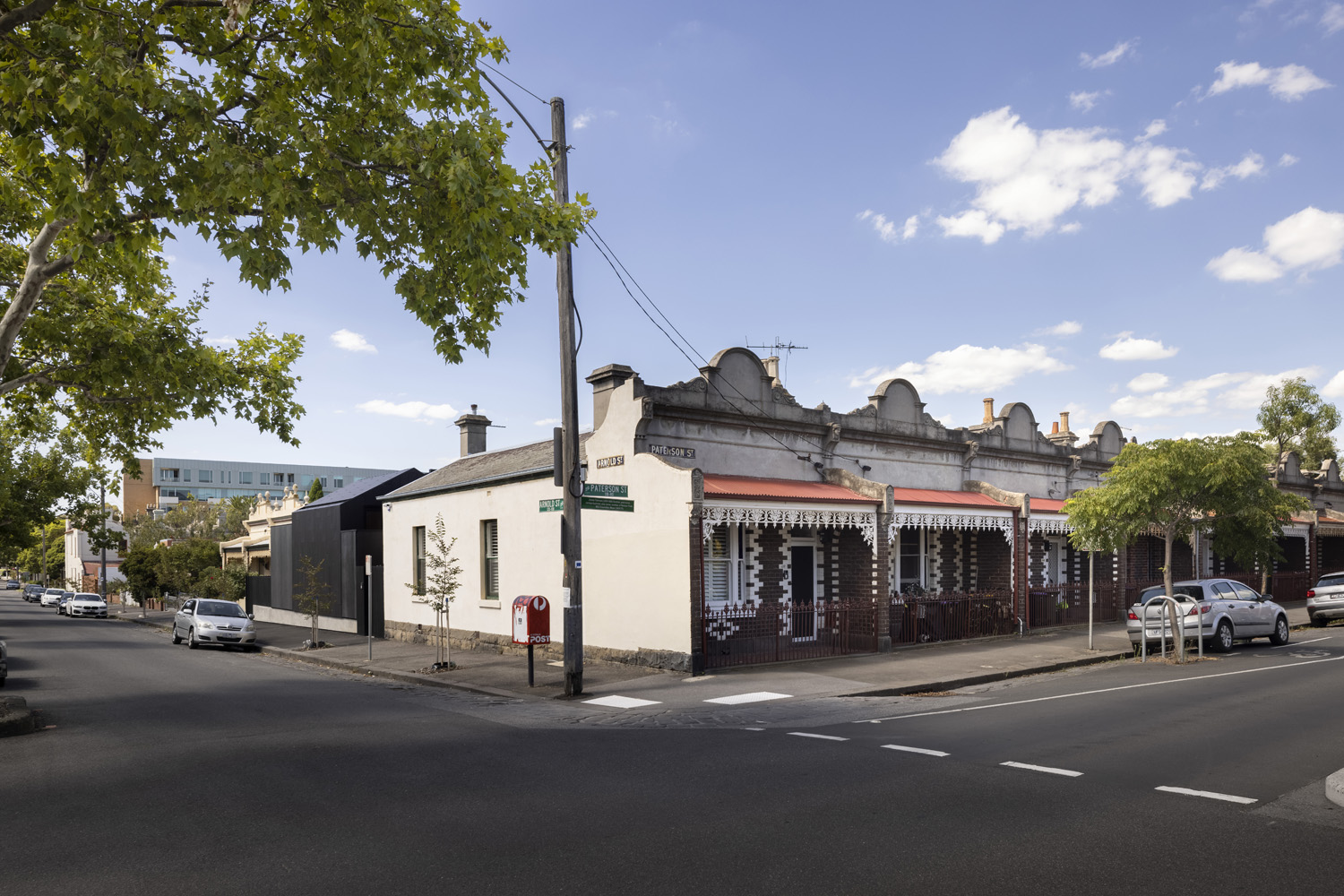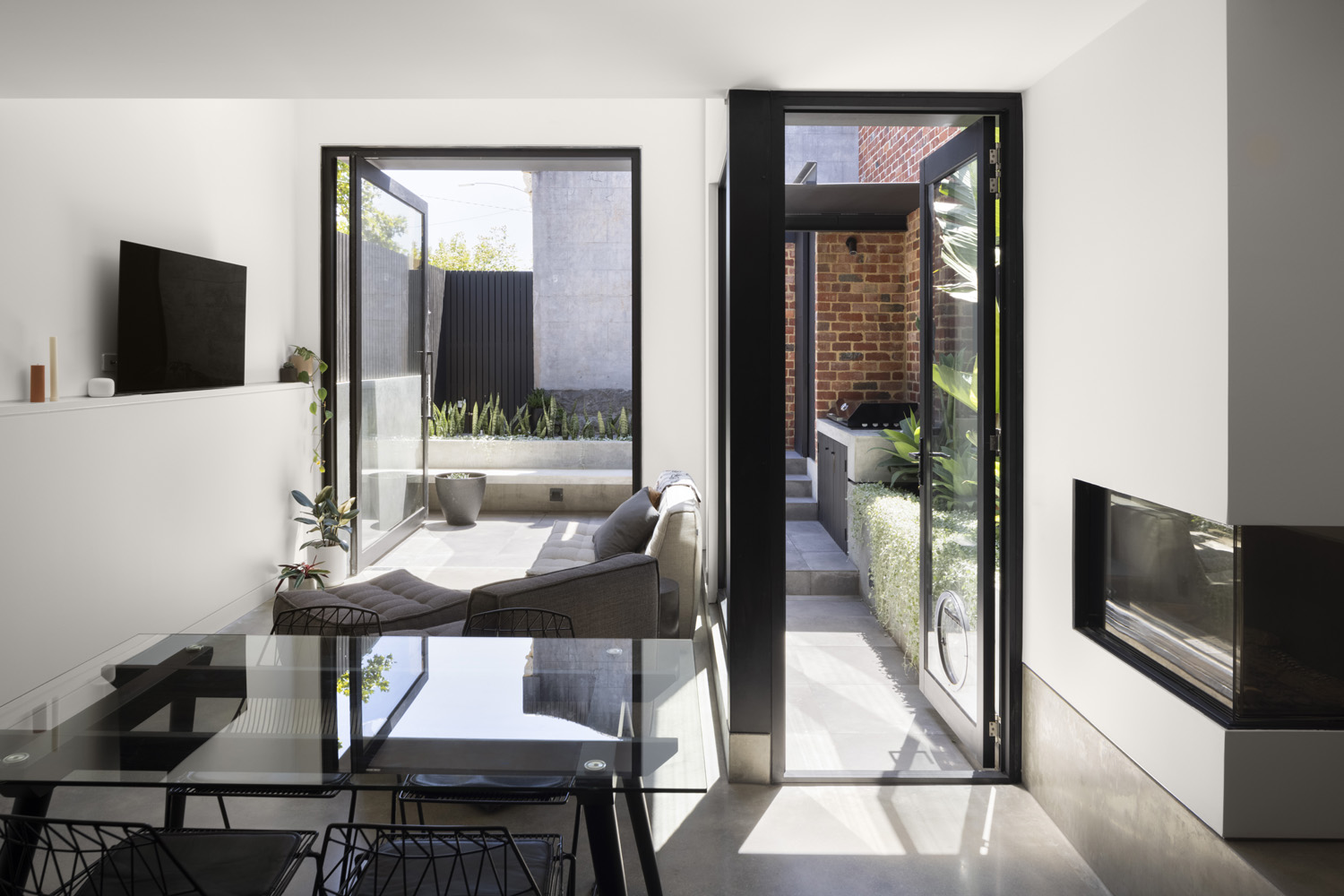Heritage Listing: Victorian Heritage Register
One of ten houses in an unusually long terrace, this small property has been skilfully extended to substantially increase the size and amenity of the living spaces while maintaining the coherence and integrity of the consistent terrace sequence.
Download a printable copy of Carlton Terrace Case Study (PDF 642KB).
Significance of the place
The terrace row was built speculatively between 1889 and 1894 by Justus Wambach. Listed in the Victorian Heritage Register,
it is identified as having architectural significance as a “notable example of boom style terrace architecture” and historic signifcance as an “essential part of the Carlton North precinct, an area that contains some of Melbourne’s finest and most intact 19th century streetscapes.” The terrace also reflects the substantial growth of inner Melbourne in the late nineteenth century. The renovated property is on a corner site at the western end of the group and both street facades are significant.
Opportunities
Maintaining the property’s contribution to the heritage values of the repetitive terrace row and the broader streetscape was paramount, with the street facades being most important. The orientation of the property was a great benefit, as the north-facing rear and garden had the potential to be altered without compromising the heritage significance of the place. This presented opportunities to extend, to open the living spaces to the outside and to increase light into the original terrace. The plan of the house had not been altered – three main rooms at the front, with a kitchen and bathroom to the rear – and the principal rooms could be maintained in the project.
Challenges
The main challenge was to increase the amount of living space, accommodate contemporary functions and improve environmental performance while maintaining the heritage values of the terrace row. The brief was for two additional bedrooms, an office, kitchen, living and dining areas, a family bathroom, an ensuite, along with laundry, bike store and outdoor entertaining area – this was a lot of program to fit onto a confined site.
Approach and outcome
The new work is concentrated at the rear of the heritage terrace house. The addition is hidden from the main street frontage while the side street elevation has been carefully composed to give precedence to the terrace house and to carefully separate new and old.
The two-storey extension houses the kitchen and dining on the ground floor with a new bedroom and ensuite in a mezzanine space above, and a taller living space and a garden courtyard beyond. Stepping the addition 1.3 metres below the floor level of the heritage structure meant it was possible to align the roof of the extension with the ridgeline of the terrace, while accommodating the new functions over two levels. A ledge to the east of the living room, below the stair to the bedroom, is kept at the original height to minimise the impact to the footings of the adjoining dwelling. Two bedrooms, an office, a bathroom and laundry are housed in the terrace, with a small separate office entry to the side.
Seen from the side street, new is distinct from the old. A small linking structure housing the stair down to the new kitchen and living areas sits next to the retained former kitchen, creating a visual break between the dark zinc-clad extension and the pale rendered brick terrace. It also brings natural light and cross ventilation into the home. A concrete plinth continues the line of the bluestone foundation of the terrace, masking the interior drop in level, while the rear fence is also integrated into the facade composition.
Lessons
- The uniformity of the terrace row is maintained by locating the major changes at the rear of the property.
- The use of contrasting materials and building forms ensures that new and old are visually distinct.
- Horizontal visual connections between old and new are maintained through aligning rooflines and the baseline of the two buildings.
- Excavation enables a substantial increase in floor area without dominating the heritage terrace.
- Careful attention to changing levels and composition in section as well as plan has increased amenity on a small inner-suburban site.
Project team
Architect: Atelier Wagner
Builder: A-Team Carpentry & Renovations
Structural Engineer: Clive Steele Partners




